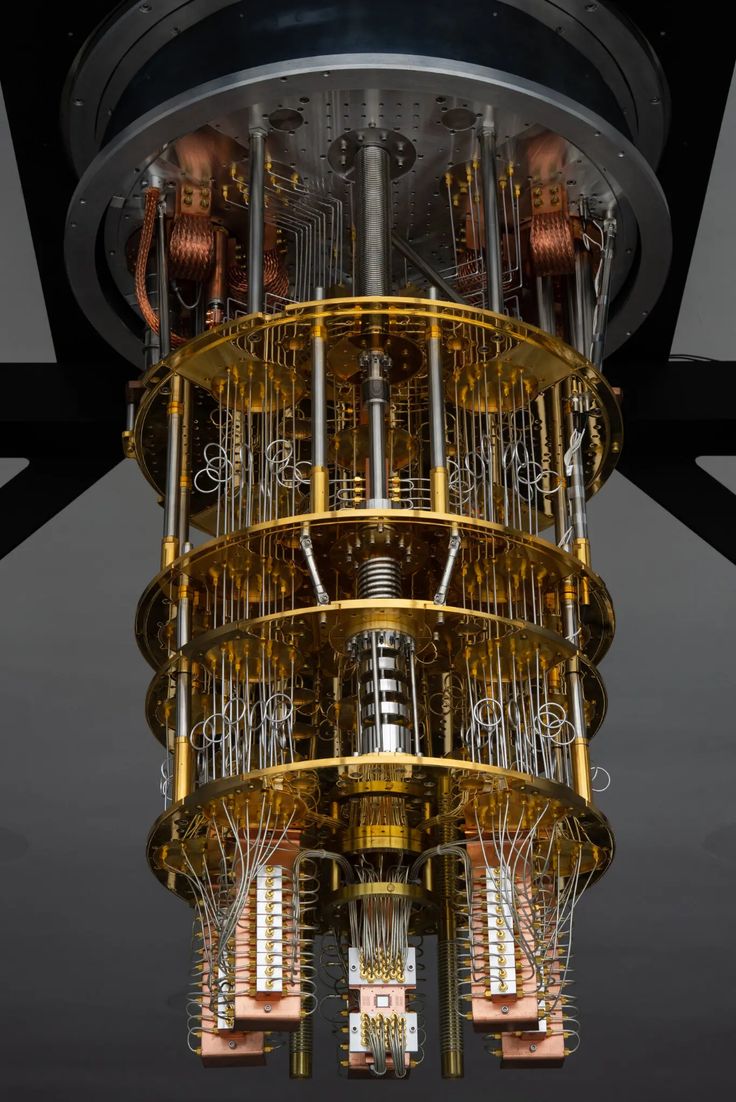The world of computing is on the brink of a monumental transformation, one that promises to reshape industries, redefine problem-solving, and unlock scientific breakthroughs previously deemed impossible. This impending revolution is driven by quantum computing, a radical departure from the classical binary systems that have powered our digital age for decades. Unlike traditional computers that rely on bits representing either 0 or 1, quantum computers leverage the bizarre and counter-intuitive principles of quantum mechanics—superposition and entanglement—to perform calculations in ways that defy classical logic. This allows them to tackle problems of immense complexity at speeds and scales unimaginable with today’s most powerful supercomputers. We’re witnessing not just an upgrade, but a true quantum leap, heralding a new era of computational power that will redefine what’s possible in science, technology, and beyond.
The Foundational Shift: Beyond Classical Computing’s Limits
To truly appreciate the revolutionary nature of quantum computing, it’s essential to understand the fundamental limitations of classical computers and how quantum mechanics offers a way to transcend them.
A. The Realm of Classical Computing
For over half a century, classical computers have been the bedrock of our digital world. They operate on principles that are intuitive and observable in our everyday macroscopic reality.
- Binary Bits: The Foundation: Classical computers store and process information using bits, which can exist in one of two distinct states: 0 or 1. Every piece of data, every instruction, every pixel on your screen is ultimately represented by a sequence of these binary digits.
- Sequential Processing: Classical processors typically perform calculations in a sequential manner, one step after another. Even with multiple cores or parallel processing, the underlying operations are still executed serially on individual bits.
- Algorithmic Limitations: While incredibly powerful for many tasks, classical computers face inherent limitations when dealing with problems that involve:
- Large Search Spaces: Trying every possible combination in a vast set of possibilities becomes computationally intractable.
- Complex Simulations: Simulating natural phenomena at the atomic or molecular level (e.g., protein folding, drug interactions) requires an exponential amount of computational power, quickly overwhelming classical machines.
- Intractable Optimization Problems: Finding the absolute best solution among an astronomical number of choices (e.g., optimizing logistics routes for thousands of delivery points) can take billions of years for classical algorithms.
- Moore’s Law Plateau: While Moore’s Law (the observation that the number of transistors on a microchip doubles approximately every two years) has driven relentless progress, physical limits are being approached. Transistors are shrinking to atomic scales, where quantum effects actually become a problem for classical computing, introducing errors and instability.
B. Entering the Quantum Realm: New Rules of Computation
Quantum computing departs entirely from these classical constraints by harnessing phenomena observed at the subatomic level, where particles behave in ways that seem paradoxical to our everyday experience.
- Qubits: The Quantum Bit: Instead of classical bits, quantum computers use qubits. A qubit is a quantum system (like an electron’s spin or a photon’s polarization) that can represent 0, 1, or, critically, a superposition of both 0 and 1 simultaneously. This ability to exist in multiple states at once exponentially increases the information a qubit can hold.
- Superposition: All Possibilities at Once: Superposition means a single qubit can be in a state that’s a linear combination of 0 and 1. When you have multiple qubits in superposition, the number of possible states they can represent simultaneously grows exponentially ( for qubits). This allows quantum computers to process multiple calculations in parallel, not by having more processors, but by leveraging the inherent nature of quantum states.
- Entanglement: The Spooky Connection: Entanglement is a unique quantum phenomenon where two or more qubits become interconnected in such a way that the state of one instantly influences the state of the others, regardless of the distance between them. This ‘spooky action at a distance’ (as Einstein called it) creates a powerful correlation between qubits, enabling complex computations and information processing that has no classical analogue.
- Quantum Gates: The Operators: Just as classical computers use logic gates (AND, OR, NOT) to manipulate bits, quantum computers use quantum gates to manipulate qubits. These gates are unitary operations that preserve the quantum nature of the qubits (superposition, entanglement) throughout the computation.
- Quantum Algorithms: New Problem Solvers: New algorithms are required to leverage quantum phenomena. Algorithms like Shor’s algorithm (for factoring large numbers, threatening current encryption) and Grover’s algorithm (for searching unstructured databases faster) demonstrate the potential for exponential speedups over classical methods for certain types of problems.
The combination of superposition and entanglement allows quantum computers to explore vast computational spaces simultaneously, making them uniquely suited for problems that are intractable for even the most powerful classical supercomputers.
Core Principles and Mechanisms of Quantum Computing
Building and operating a quantum computer involves managing extremely delicate quantum states, far removed from the robust transistor switches of classical machines.
A. Quantum Hardware Architectures
Building a quantum computer is a monumental engineering challenge, primarily because qubits are extremely fragile and susceptible to interference from their environment. Various physical implementations of qubits are being researched and developed:
- Superconducting Qubits: These are tiny circuits made from superconducting materials, cooled to temperatures near absolute zero (millikelvins) to eliminate electrical resistance and thermal noise. They are manipulated by microwave pulses. Companies like Google, IBM, and Rigetti largely use this approach.
- Trapped Ion Qubits: Individual ions (atoms with an electric charge) are suspended in a vacuum by electromagnetic fields and manipulated by lasers. They offer excellent coherence times and high fidelity. Companies like IonQ and Honeywell are leaders here.
- Topological Qubits: A more theoretical approach (Microsoft’s focus) that uses exotic quantum states that are inherently more stable and resistant to environmental noise, promising high fault tolerance.
- Photon-Based Qubits (Photonic Quantum Computing): Uses individual photons as qubits, manipulated through optical circuits. Offers advantages in communication and room-temperature operation. Companies like Xanadu and PsiQuantum are exploring this.
- Silicon-Based Qubits (Quantum Dots): Leveraging existing silicon manufacturing techniques, these qubits are built using electron spins in semiconductor materials. Offers potential for scalability given mature silicon foundries.
Each architecture has its strengths and weaknesses in terms of qubit coherence, connectivity, error rates, and scalability.
B. Coherence and Decoherence: The Fragile State
Coherence refers to the ability of a qubit to maintain its quantum properties (superposition and entanglement). Qubits are extremely delicate; even tiny interactions with their environment (e.g., thermal fluctuations, electromagnetic fields) can cause them to lose their quantum state and revert to a classical 0 or 1. This process is called decoherence.
- Minimizing Decoherence: Quantum computers require extreme isolation from their environment. This means operating at ultra-low temperatures (colder than deep space), in ultra-high vacuums, and shielding from electromagnetic interference.
- Coherence Time: A critical metric for quantum hardware, indicating how long a qubit can maintain its quantum state before decohering. Longer coherence times allow for more complex computations.
- Error Correction: Due to decoherence and other noise, quantum computers are highly prone to errors. Quantum error correction is a vital field aiming to develop methods to detect and correct these errors, but it requires many physical qubits to encode a single logical (error-corrected) qubit, presenting a massive scalability challenge.
C. Quantum Algorithm Design
Programming a quantum computer is fundamentally different from classical programming. It requires a deep understanding of quantum mechanics and specialized algorithms designed to exploit quantum phenomena.
- Quantum Gates and Circuits: Quantum algorithms are constructed as sequences of quantum gates, forming a quantum circuit. These circuits dictate how qubits are manipulated to perform the computation.
- Initialization and Measurement: Qubits are initialized to a known state (usually ) and at the end of the computation, their final state is measured, collapsing the superposition into a classical 0 or 1, which represents the result. Due to the probabilistic nature, the computation often needs to be run many times to get a reliable result.
- NISQ Era (Noisy Intermediate-Scale Quantum): Current quantum computers are in the NISQ era, meaning they have a limited number of qubits (typically 50-100+) and are very noisy (high error rates, short coherence times) and lack full error correction. This limits the types of problems they can tackle, focusing on specific optimization or simulation tasks where approximate solutions are acceptable.
Transformative Applications: Where Quantum Computing Shines
Quantum computing is not a replacement for classical computers for everyday tasks (like email or word processing). Its power lies in its ability to solve specific, intractable problems that are beyond the reach of any classical supercomputer.
A. Drug Discovery and Materials Science
Quantum computers are uniquely suited to simulate quantum systems, making them revolutionary for understanding and designing new molecules and materials.
- Molecular Simulation: Accurately modeling molecular interactions, predicting chemical reactions, and understanding protein folding at the atomic level. This could accelerate the discovery of new drugs for diseases like Alzheimer’s, cancer, and infectious diseases, by enabling virtual screening of billions of drug candidates.
- Advanced Materials Design: Designing novel materials with specific properties from the ground up, such as superconductors that work at room temperature, more efficient solar cells, lighter and stronger alloys for aerospace, or catalysts for more sustainable industrial processes.
- Fertilizer Production (Haber-Bosch): Simulating the nitrogen fixation process (Haber-Bosch process), which currently consumes 1-2% of the world’s energy, to find more energy-efficient catalysts. Even a small improvement could have massive environmental and economic impact.
B. Cryptography and Cybersecurity
Quantum computing presents both a threat and an opportunity for cybersecurity.
- Breaking Current Encryption (Shor’s Algorithm): Shor’s algorithm can efficiently factor large prime numbers, which is the mathematical basis for widely used public-key encryption standards like RSA and ECC. Once large-scale, fault-tolerant quantum computers are built, these encryptions will be vulnerable, necessitating a transition to post-quantum cryptography.
- Developing Post-Quantum Cryptography: Research is heavily focused on developing new cryptographic algorithms that are resistant to attacks from quantum computers. Quantum computers themselves can assist in proving the security of these new algorithms.
- Quantum Key Distribution (QKD): Leveraging quantum mechanics to create unhackable methods for key exchange, offering fundamentally secure communication channels. This is already being demonstrated in limited real-world scenarios.
C. Financial Modeling and Optimization
The ability to process vast amounts of data and solve complex optimization problems makes quantum computing highly relevant for the financial sector.
- Portfolio Optimization: Managing complex investment portfolios with numerous variables to maximize returns while minimizing risk, especially under fluctuating market conditions.
- Fraud Detection: Identifying sophisticated patterns of fraud in real-time within massive datasets that classical AI might miss.
- Algorithmic Trading: Developing more advanced and faster trading algorithms by simulating market dynamics with unprecedented accuracy.
- Risk Analysis (Monte Carlo Simulations): Performing highly complex Monte Carlo simulations for accurate risk assessment in financial markets, significantly faster than classical methods.
D. Artificial Intelligence and Machine Learning
Quantum computing holds the promise of accelerating and enhancing certain aspects of Artificial Intelligence (AI) and Machine Learning (ML).
- Quantum Machine Learning (QML): Developing new ML algorithms that can run on quantum computers, potentially leading to faster training of models, handling larger datasets, and discovering more complex patterns than classical ML algorithms. Examples include quantum neural networks or quantum support vector machines.
- Optimization for AI Models: Quantum annealing and other quantum optimization techniques can be used to optimize the parameters of large AI models (e.g., deep neural networks), potentially leading to more efficient and powerful AI.
- Pattern Recognition: Enhanced capabilities for identifying subtle patterns in highly complex or noisy datasets, which is crucial for tasks like medical diagnostics, image recognition, or anomaly detection.
E. Logistics and Optimization
Many real-world problems involve finding the optimal solution among a vast number of possibilities (combinatorial optimization). Quantum computers are uniquely suited for these.
- Supply Chain Optimization: Finding the most efficient routes for delivery fleets, optimizing warehouse logistics, and managing complex global supply chains to reduce costs and improve speed.
- Traffic Management: Optimizing traffic flow in smart cities to reduce congestion and travel times.
- Scheduling: Efficiently scheduling complex operations, such as airline gate assignments, factory production lines, or hospital appointments, considering numerous constraints.
F. Climate Modeling and Environmental Science
Simulating complex natural systems is a domain where quantum computers could provide profound insights.
- Advanced Climate Models: Running more accurate and granular simulations of climate change phenomena, including atmospheric chemistry, ocean currents, and ice sheet dynamics, to better predict future impacts and inform mitigation strategies.
- Weather Forecasting: Developing more precise and longer-range weather forecasts by modeling atmospheric conditions with greater detail.
- Sustainable Energy Solutions: Designing more efficient battery materials, optimizing smart grids, and finding new ways to capture and convert energy.
Challenges and the Road Ahead: The Quantum Journey
Despite its immense promise, quantum computing faces significant scientific, engineering, and practical challenges before it can realize its full potential.
A. Hardware Engineering: The ‘Noise’ Problem
Building stable, reliable quantum hardware is the most significant hurdle.
- Decoherence Management: Maintaining qubit coherence for long enough to perform complex calculations is incredibly difficult. Current qubits are very fragile.
- Error Rates: Even with extreme environmental controls, qubits are prone to errors. Building fault-tolerant quantum computers that can correct these errors requires a massive overhead of physical qubits to create stable logical qubits, a challenge far beyond current capabilities.
- Scalability: Scaling up the number of qubits while maintaining low error rates and high connectivity is a monumental engineering feat. Current systems are limited to tens or a few hundreds of qubits, far short of the millions needed for truly complex, error-corrected computations.
- Inter-Qubit Connectivity: Ensuring that any qubit can interact with any other qubit (all-to-all connectivity) is crucial for many algorithms but challenging to implement physically without introducing more errors or complexity.
B. Software Development and Algorithm Design
The software ecosystem for quantum computing is nascent and presents its own set of challenges.
- Quantum Algorithm Discovery: While some key algorithms exist (Shor, Grover), discovering new quantum algorithms that offer exponential speedups for practical problems is an ongoing area of research.
- Programming Tools and Languages: Developing user-friendly programming languages, compilers, and development environments that allow classical developers to write quantum algorithms without needing a Ph.D. in quantum physics.
- Quantum Software Stack: Building a robust software stack, including operating systems, compilers, and libraries, that can efficiently translate high-level quantum algorithms into instructions for specific quantum hardware.
C. Quantum Supremacy vs. Quantum Advantage
It’s crucial to distinguish between these two often-confused terms:
- Quantum Supremacy (or Quantum Advantage for practical problems): Demonstrating that a quantum computer can solve a specific, well-defined computational problem faster than the best-known classical supercomputer. Google’s 2019 experiment with Sycamore processor achieved this for a highly specialized random number generation problem.
- Practical Quantum Advantage: This is the ultimate goal – demonstrating that a quantum computer can solve a real-world, practically relevant problem faster or more efficiently than any classical computer. We are not yet at this stage for most commercial applications.
D. The Talent Gap
There is a severe global shortage of experts with the necessary interdisciplinary skills in quantum physics, computer science, mathematics, and engineering to advance quantum computing. Developing this talent pipeline is critical.
E. High Costs and Accessibility
Current quantum computers are extremely expensive to build, operate, and maintain. Access is typically limited to major corporations, governments, and research institutions via cloud platforms. Making quantum computing more accessible and affordable is a long-term goal.
The Road Ahead: Navigating the Quantum Landscape
Despite the challenges, the pace of quantum research and development is accelerating, driven by significant investments from governments and tech giants.
A. Hybrid Quantum-Classical Computing
In the near to medium term (the NISQ era), the most practical applications will likely involve hybrid quantum-classical computing. This means leveraging quantum processors for the computationally intensive parts of a problem (e.g., optimization, simulation) while classical computers handle the bulk of the data processing, control, and orchestration. Frameworks like Qiskit (IBM) and PennyLane (Xanadu) support this.
B. Quantum Cloud Services
Major cloud providers (IBM Quantum Experience, AWS Braket, Azure Quantum, Google Quantum AI) are making quantum hardware accessible via the cloud. This allows researchers and developers to experiment with quantum computing without the need to own expensive hardware, significantly accelerating research and development. This will be the primary access model for the foreseeable future.
C. Focus on Practical Problem Decomposition
Instead of waiting for a fully fault-tolerant quantum computer, research is focusing on how to break down complex real-world problems into smaller, quantum-solvable sub-problems that can benefit from current NISQ devices, even with their limitations. This involves creative algorithm design and problem mapping.
D. Quantum-Safe Cryptography Transition
The global transition to post-quantum cryptography (PQC) is already underway. Standardization bodies (like NIST) are evaluating and selecting new cryptographic algorithms. Organizations worldwide will need to start assessing their cryptographic inventory and planning their migration strategies to protect sensitive data from future quantum attacks, long before fault-tolerant quantum computers become a reality.
E. Ecosystem Development and Workforce Training
Continued investment in building the quantum computing ecosystem is crucial. This includes:
- Academic Research: Funding fundamental research into quantum physics and new quantum algorithms.
- Startup Incubation: Supporting innovative startups developing quantum hardware, software, and applications.
- Workforce Development: Creating educational programs, online courses, and training initiatives to build the necessary talent pool.
- Open Source Contributions: Fostering open-source quantum computing frameworks and libraries to promote collaboration and accelerate development.
F. Quantum Sensors and Networking
Beyond computation, quantum technologies also promise revolutions in other areas:
- Quantum Sensors: Ultra-precise sensors (e.g., for magnetic fields, gravity, time) that leverage quantum properties to achieve sensitivity levels far beyond classical limits, with applications in medicine, navigation, and fundamental physics.
- Quantum Networking: Building secure, inter-connected quantum networks for quantum key distribution and eventually distributed quantum computing, allowing distant quantum computers to work together.
Conclusion
Quantum computing represents a truly profound shift in our understanding and application of computational power. It is not an incremental improvement but a fundamental reimagining of how we solve the most challenging problems facing humanity. By harnessing the peculiar laws of superposition and entanglement, quantum computers promise to unlock breakthroughs in drug discovery, materials science, AI, finance, and cryptography that are simply beyond the reach of classical machines.
While significant scientific and engineering hurdles remain—particularly in achieving stable, error-corrected, and scalable quantum hardware—the rapid pace of innovation, coupled with substantial global investment, signals an undeniable trajectory towards a quantum future. The journey ahead will be complex, characterized by hybrid quantum-classical solutions, cloud-based access, and a relentless focus on practical applications. We are standing at the dawn of a new computational era, a quantum leap that will redefine the boundaries of what’s possible, reshaping industries and empowering humanity with unprecedented problem-solving capabilities. It’s not a question of if, but when, quantum computing fundamentally changes our world.









